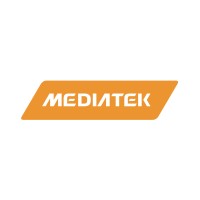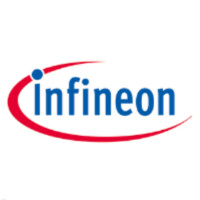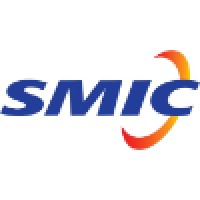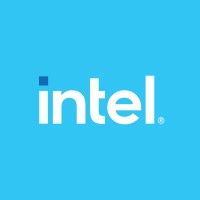Company Cyber Security Posture
NANA
NA Company Details
NA
NA
NA
NA
NA
NA
Scan still pending
NA
NA
Between 200 and 800
This score is AI-generated and less favored by cyber insurers, who prefer the TPRM score.
 NA Global Score
NA Global Score.png)

Company Scoring based on AI Models
| Model Name | Date | Description | Current Score Difference | Score |
|---|---|---|---|---|
| AVERAGE-Industry | 03-12-2025 | This score represents the average cybersecurity rating of companies already scanned within the same industry. It provides a benchmark to compare an individual company's security posture against its industry peers. | N/A | Between 200 and 800 |
Company Cyber Security News & History
| Entity | Type | Severity | Impact | Seen | Url ID | Details | View |
|---|
Company Subsidiaries

NA
Access Data Using Our API

Get company history
.png)
NA Cyber Security News
Sensata Technologies’ operations disrupted by ransomware attack
Sensata Technologies was struck by a ransomware attack earlier this week that disrupted several of the company's operations, according to a ...
Secret Hack Connects TI-84 Calculator to Internet & Accesses ChatGPT
“This enables the download of a launcher program that provides access to various “applets” designed for cheating, including a ChatGPT interface, ...
Meet the Latest Cybersecurity Standards with New, Integrated Wireless MCUs
2024 legislation mandates stricter cybersecurity requirements on everything from consumer IoT devices to critical infrastructure.
Dallas Cybersecurity Job Market: Trends and Growth Areas for 2025
Explore the Dallas cybersecurity job market in 2025. Discover trends, key employers, and growth opportunities in Dallas, Texas.
Texas Instruments Stock: Congress Likes It, Should You Too?
Texas Instruments (NASDAQ: TXN) is the Most Bought Stock by Congress, according to data reported by MarketBeat. That is a surprise, ...
Completed Projects | Kaput Center
The group will work to identify ways to engage middle school students and their teachers in learning about AI, cybersecurity, and the ...
Leverage LLM, AI For Smarter Cybersecurity In Mobility: VicOne’s Jay Turla
In a world where vehicles are increasingly defined by software and connectivity, cybersecurity is no longer optional—it's essential.
Texas Instruments Inc. – Digital Transformation Strategies
The 'Texas Instruments digital transformation strategies' report will act as a reference point to understand a company/competitor's digital ...
Top 10 Tech Companies to Work for in Tyler in 2025
Discover the top 10 tech companies to work for in Tyler, Texas in 2025, known for innovation, inclusivity, and a vibrant work culture.

NA Similar Companies

MediaTek
MediaTek Incorporated (TWSE: 2454) is a global fabless semiconductor company that enables nearly 2 billion connected devices a year. We are a market leader in developing innovative systems-on-chip (SoC) for mobile, home entertainment, connectivity and IoT products. Our dedication to innovation has p

STMicroelectronics
ST is a global semiconductor leader delivering intelligent and energy-efficient products and solutions that power the electronics at the heart of everyday life. ST’s products are found everywhere today, and together with our customers, we are enabling smarter driving and smarter factories, cities an

AMD
We care deeply about transforming lives with AMD technology to enrich our industry, our communities, and the world. Our mission is to build great products that accelerate next-generation computing experiences – the building blocks for the data center, artificial intelligence, PCs, gaming and embedde

Infineon Technologies
Semiconductors are crucial to solve the energy challenges of our time and shape the digital transformation. This is why Infineon is committed to actively driving decarbonization and digitalization. As a global semiconductor leader in power systems and IoT, we enable game-changing solutions for green

SMIC
Semiconductor Manufacturing International Corporation (“SMIC” SEHK: 981; SSE: 688981), one of the leading foundries in the world, is Mainland China’s largest, most advanced semiconductor manufacturer. SMIC provides integrated circuit (IC) foundry and technology services on process nodes from 0.35 mi

Intel Corporation
Intel’s mission is to shape the future of technology to help create a better future for the entire world. By pushing forward in fields like AI, analytics and cloud-to-edge technology, Intel’s work is at the heart of countless innovations. From major breakthroughs like self-driving cars and rebuildin

Frequently Asked Questions
Explore insights on cybersecurity incidents, risk posture, and Rankiteo's assessments.
NA CyberSecurity History Information
How many cyber incidents has NA faced?
Total Incidents: According to Rankiteo, NA has faced 0 incidents in the past.
What types of cybersecurity incidents have occurred at NA?
Incident Types: The types of cybersecurity incidents that have occurred include .
Additional Questions
What Do We Measure?
















Every week, Rankiteo analyzes billions of signals to give organizations a sharper, faster view of emerging risks. With deeper, more actionable intelligence at their fingertips, security teams can outpace threat actors, respond instantly to Zero-Day attacks, and dramatically shrink their risk exposure window.
These are some of the factors we use to calculate the overall score:
Identify exposed access points, detect misconfigured SSL certificates, and uncover vulnerabilities across the network infrastructure.
Gain visibility into the software components used within an organization to detect vulnerabilities, manage risk, and ensure supply chain security.
Monitor and manage all IT assets and their configurations to ensure accurate, real-time visibility across the company's technology environment.
Leverage real-time insights on active threats, malware campaigns, and emerging vulnerabilities to proactively defend against evolving cyberattacks.




